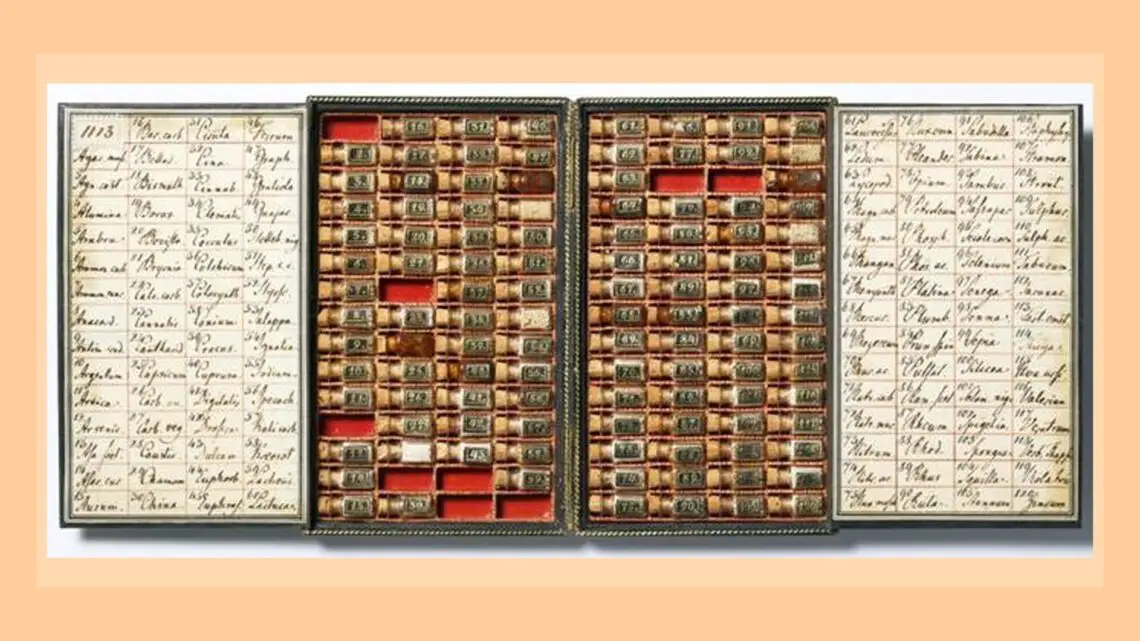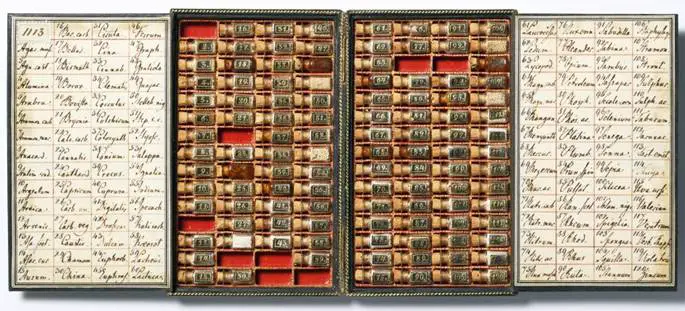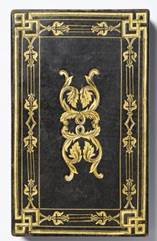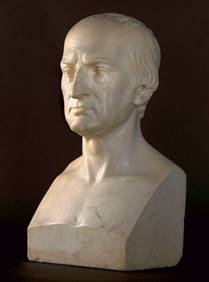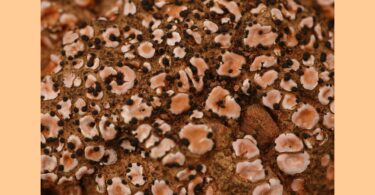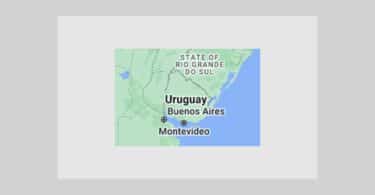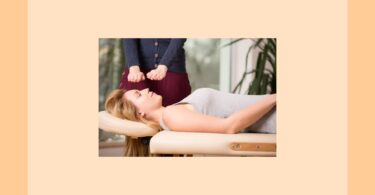Thorvaldsen’s Museum is located in the heart of Copenhagen on the small Island of “Slotsholmen” next to Christianborg Palace. It is dedicated to the art and belongings of the Danish Neoclassical sculptor Bertel Thorvaldsen (1770-1844) who lived and worked in Rome for most of his life (1796-1838). One of his belongings, a homeopathic travel kit, has been shrouded in mystery.
Thorvaldsen’s homeopathy kit – Photo by Jacob Faurvig
The travel kit found its way back to the museum in 1899 as a gift from F. Oelsner who was the consul of the Republic of Venezuela in Amsterdam at the time. He had bought 4 of Thorvaldsen’s items, including the travel kit, from an auction in Amsterdam held by the auction house H.G. Bom for the heirs of Johan George Lodewijk Rieke (also spelt Riecke)(1817-1898) on November the 11th 1898. Riecke was a Dutch painter and a great admirer of Thorvaldsen. He had bought several of Thorvaldsen’s items after his death.
Photo by Jacob Faurvig
So far it has been impossible to discover how or from whom Thorvaldsen had obtained the homeopathic travel kit.
Thomassen (1975) ponders that Thorvaldsen cannot have obtained it long before 1805 as Digitalis which is in vial nr. 45 in the kit did not enter the Danish Materia Medica until 1805. At the same time, she wonders why so many of the remedies in the kit are made from medicines that were already considered outdated by Hahnemann in his “Apothekerlexikon” from 1793, and which he warned should only be used if prescribed by a doctor as they had so many side effects.
She implies that the travel kit was probably impractical to use on a journey as there weren’t any practical utensils for dispensing the remedies included in the kit, i.e. Aurum would be impossible to use as he could not have made Aurum potabile.
One of the questions F.W.P. H. Sohn (1983) asks in his article: “Thorvaldsens Reiseapotheke” is whether or not the Travel kit in fact belonged to Thorvaldsen. This is based on his reasoning that amongst a few other remedies from the kit, Solanum Nigrum, was not proved until 1845 and therefore it is very unlikely that Thorvaldsen was in possession of a homeopathic travel kit containing Solanum Nigrum as he died in 1844.
It is, however, interesting that it is possible to find Hahnemann’s direction for its homeopathic preparation in the footnotes to § 267 in the 5th edition of Organon in which his own preface is dated March 28th 1833. Furthermore, Sohn questions if Thorvaldsen underwent homeopathic treatment at all as homeopathy was not introduced to Denmark until 1821 by H.C. Lund and by 1831 there were only approximately 4 homeopaths in the whole of Denmark.
The aim of this article is to try to shed some light on a few of these questions. Unfortunately, it has not been possible to answer how or from whom Thorvaldsen obtained the homeopathic travel kit, but perhaps we can get closer to the answer.
Perusing the historical facts obtainable about Thorvaldsen’s life and the era in which he lived, some very interesting aspects about his social circles and his health have come to light that may in fact help to prove that it was indeed Thorvaldsen’s own travel kit.
In order to understand the life of Thorvaldsen it may help to visualize the era in which he lived. He was a contemporary of Hahnemann (1755-1843). They both lived during the enlightenment. It was a time in which art, science and ideas were spread quickly through the whole of Europe.
It was characterized by an optimistic belief in human sense and a strong conviction of the necessity of spreading all human knowledge. By developing reason and public information it was considered possible to achieve a society which would be more tolerant, free and humane.
In this context it is worth noting that homeopathy arrived in Italy around 1821 as it did in Denmark. In Italy it was introduced by Dr. George Necker, a talented pupil of Hahnemann who settled in Naples (Navab, 2013).
Thorvaldsen’s life was clearly reflected in the times and the mode of living. His art was spread all over Europe and he was surrounded by scientists, artists, philosophers and people in general who gathered prominent representatives of the sciences and arts so they could exchange ideas, and in that way improve society.
He travelled frequently on his journeys and he visited and socialized with very prominent people of the era who came to visit him when they travelled to Rome. It will become evident that Thorvaldsen in fact also had close friends and acquaintances that knew Hahnemann personally; people who also used and were strong advocates for homeopathy.
Therefore, it is not at all unlikely that he was introduced to homeopathy. The question is: Did Thorvaldsen himself meet Hahnemann? Hahnemann first got the idea of homeopathy while translating Cullen’s Materia Medica in 1790. However, the first essay on a new principle in which he set forth the homeopathic therapeutic rule was published in 1796.
At that time, he still believed the therapeutics to be only partial and for some chronic diseases. Not until 1805, nine years later in the “Medicine of Experience” he expressed the rule without any limitations of application. In 1810 the first edition of Organon was published.
Therefore, it is safe to say that Thorvaldsen certainly could not have obtained the homeopathic travel kit before that period. Not because of digitalis, (which was already in use in Germany), but because at the time homeopathy was still in its infancy.
In this context it is important to note that Hahnemann viewed the medicines differently before and after the discovery of the homeopathic principle. Medicines prior to the discovery that he considered outdated, suddenly became very important. This is why Thorvaldsen’s kit included remedies made from substances Hahnemann in 1793 had considered outdated and very dangerous.
In 1802 Thorvaldsen met the Danish minister at the Neapolitan court, Baron von Schubart. By that time Thorvaldsen was living in Rome, but his health was compromised and his finances in shambles. Baron von Schubart and his wife did everything they could to help Thorvaldsen both to introduce him to social circles where people would be likely to be interested in his art and to strengthen his health at a time: ”When his life thread was spun so fine that it was not far from breaking” (Thiele, 1851, bind 1, p.196).
Thorvaldsen was introduced to Baron von Schubart’s sister Countess Charlotte af Schimmelmann. At the time her house was a social hub in Copenhagen for the aristocracy, people of higher education and refinement. Through her husband the Countess conveyed Thorvaldsen’s art to the Danish crown prince who hired Thorvaldsen to do some sculptures for Christiansborg Palace that had to be rebuilt after the fire in 1794.
Baron von Schubart also introduced Thorvaldsen to Baron Wilhelm Humboldt and his family who at the time lived in Rome. The Humboldts gathered “The most excellent of the traveling world and in their house in Rome Thorvaldsen became acquainted with people who significantly influenced his further work.” (ibid. p.197) This is possibly true for his health as well.
Baron Wilhelm Humboldt and his brother Alexander met with Johan Wolfgang von Goethe and Schiller at Jena University during the years 1794-1797 (Mommsen, 2010). Jena was in the 18th century the centre of intellectual life in Germany.
Schiller was professor of philosophy at Jena University. Goethe was a member of “Des Geheimen Consiliums“ and through that responsible for the university for the Duchy of Sachsen Weimar. At the university the medical doctor Christoph Wilhelm Hufeland had been a professor since 1793.
Hufeland was a supporter of naturopathic medicine and posited the existence of the “vital force”. He was a very close friend of Samuel Hahnemann and a great supporter of homeopathy and he published Hahnemann’s original writings on homeopathy in his journal in 1797.
Alongside his medical lecturers Hufeland lectured on “The art of achieving a long and useful life” (Ibid, p. 2). Although Schiller during his years at Jena concentrated on his literature instead of medicine, the Humboldt brothers and Goethe devoted themselves to the medical art as well as philosophy and literature.
Indeed Goethe viewed life as a gestalt and in 1807 Alexander Humboldt even paid tribute to Goethe by dedicating one of his books to Goethe in which he, in Goethe´s personal copy, had Thorvaldsen sketch a vignette signed with the words (Mommsen 2010, p. 17): “….My friend Thorvaldsen in Rome… designed this vignette, which signifies your spirit’s wonderful idiosyncratic ability of combining poetry, philosophy and natural medicine.”
Both Schiller and Goethe became personal patients of Hufeland and Goethe has in several places expressed the fact that he owed his life to homeopathy. According to Haehl (reprint 1989, volume 1, p. 170): “he confessed himself a supporter of the new theory of healing not only in letters but also in his immortal ‘Faust’, in which by means of Mephistopheles he hurled such severe criticism at the contemporary state of therapeutic science and also in the second part of the drama where he says: “To like things like, whatever one may ail; there’s certain help.”
And further when Goethe was presented with an amulet containing a very small gold ornament, he wrote in a letter from Jena, 11.6.1820 (Ibid, p.113): “The jewelers of Frankfort must have heard of the Leipzig Dr. Hahnemann´s theory – now certainly a world famous physician – and taken the best of it for their own purposes. This man’s doctrine is that the millionth part of any given potent drug will produce the most perfect effect and will restore any man at once to complete health. The goldsmiths have worked according to this principle in their treatment of their middle jewel, and now I believe more than ever in this wonderful doctor’s theory as I have experienced, and continue to experience so clearly the efficacy of a very small administration.”
There is evidence that Thorvaldsen already knew Goethe in 1805 and it is not unlikely that they were somehow introduced to each other through their mutual friend Wilhelm Humboldt.
Another very interesting acquaintance whom Caroline von Humboldt (the wife of Wilhelm von Humboldt and a very close friend of Thorvaldsen) introduced to Thorvaldsen was Duke Friedrich Ferdinand von Anhalt-Köthen.
On September the 7th 1811 Caroline wrote in a letter to Thorvaldsen that the prince had left for Rome and that he was very interested in meeting Thorvaldsen. According to Haehl (reprint, 1989, volume 2) Hahnemann became the personal physician of the Duke von Anhalt-Köthen and moved there on the first Whit holiday of 1821 after having treated the Duke for some time.
The same year 1821 Luigi Bienaimé who at the time was 26 years old and under the supervision of Thorvaldsen at his studio in Rome made a bust of Hahnemann. It is assumed that the Duke von Anhalt-Köthen may have commissioned the bust as Hahnemann was appointed that year.
Hahnemann’s bust by Luigi Bienaimé
Photo by Jacob Faurvig
According to Panzetta (2003, volume 2) Bienaimé produced commissions of his own designs by 1827 when he also became the head of Thorvaldsen’s studio. It is unknown where the sculptor and his model actually met and the question may be whether Hahnemann sat for Thorvaldsen himself on Thorvaldsen’s trip back from Denmark in 1820 when he spent six days in Dresden from September the 6th (Thiele 1854), and returned with a lot of orders on his books. Whatever the answer is, it does not change the fact that there is a connection between Hahnemann himself and Thorvaldsen’s studio.
In this context it is worth mentioning a curious coincidence. In 1820 on his way back to Rome, Thorvaldsen went through the Duchy of Troppau. Here he met with Alexander the first of Russia as he was already there to participate in a Prince congress. Alexander the first introduced Thorvaldsen to the Prince of Austria who wanted him to create a monument in honor of Prince Schwarzenberg who had recently died in Leipzig.
The Prince of Austria invited Thorvaldsen to go to Vienna on his way home in order to find an appropriate place for such a monument in one of the City’s churches. According to Thiele (1854), Thorvaldsen arrived in Vienna on November the 5th 1820. He stayed in Vienna for 3 weeks and during that time found a space for the monument in the Court Church.
According to Thiele (ibid) it seemed to be Thorvaldsen´s intention to create the monument. That is evident from a sketch he has created and from a journal published in Vienna in November 1820 in which it was referred to. The intended monument was to be huge and show Prince Schwarzenberg standing in the middle with a historical bas relief saying: Prince Schwarzenberg’s entry into Leipzig, with a statue of Nemesis on one side and one of Victoria on the other side, “but for reasons he later never seemed to want to discuss, this sketch was the only thing he left of this monument (ibid, p. 88).” Even after several years, when Thiele asked Thorvaldsen again, he evaded the question (ibid, p. 122).
Photo by Jacob Faurvig
Prince Schwarzenberg was a general officer commanding the allied armies against Napoleon (Haehl, reprint 1989, vol.1). He had appeared in Leipzig in October 1813 as a conqueror. In 1817 he suffered a stroke that left his right side paralyzed. After that, he suffered repeated attacks of paralysis and lethargy.
He also suffered from insomnia. He was treated by two doctors, the royal physician, doctor von Sax, Field-Surgeon Major and Imperial Counselor, and the regimental doctor Maranzeller respectively, but to no avail. Doctor Maranzeller strongly advised the prince to attend Doctor Hahnemann in Leipzig.
Although the trusted medical adviser of the Emperor Franz the first (His Excellency von Stifft), had persuaded the monarch in 1819 to forbid by decree the practice of homeopathy in Austria, Hahnemann was asked to go to Austria to treat the prince.
Hahnemann declined in spite of the fame and money offered, as his other patients and scientific work would not permit a long absence from Leipzig. Instead, the prince came to Leipzig in May 1820 along with his own two doctors and a large retinue.
He chose a large estate outside Leipzig called “Milkisle” and there the already much persecuted Hahnemann was brought by carriage for every consultation. According to Haehl (ibid.p.113) “The interest aroused everywhere by Hahnemann’s treatment of Schwarzenberg is also evident from Goethe’s letters, written in the year 1820…”In this place a curious game is being played by refusing and damming up innovations of any kind. E.g. it is forbidden to cure by magnetism (Mesmer) and nobody is allowed to practice by Hahnemann’s method….but now Prince Schwarzenberg, very ill and probably incurable, has confidence in this new Theophrastus Paracelsus and begs for leave of absence from the Emperor to seek a cure across the border.””
And further in another letter from Goethe (ibid, p.113):”…If it should benefit Prince Schwarzenberg, just now staying in Leipzig for this very cure, as much as me, the doctor’s fame and reward will not by any means suffer.”
At first Prince Schwarzenberg´s health improved remarkably well under homeopathic treatment, to the detriment of Hahnemann’s very jealous allopathic colleagues and adversaries. Unfortunately, the prince took to his old habits against Hahnemann´s advice both in regard to his mode of living and his dietary habits, and on Hahnemann’s last visit in the company of Dr. Maranzeller (who believed in homeopathy) he met there allopathic doctors, who were engaged in phlebotomizing the patient.
This was 5 weeks before the prince´s death and Hahnemann never returned. The prince died from another stroke on October the 15th 1820. This was probably the final straw on Hahnemann’s long list of adversities. He was persecuted to the extent that he had to leave Leipzig in 1821 and he was, as aforementioned, protected by Duke von Anhalt-Köthen in Köthen.
News did not travel fast at the time. Some letters took at least 2 months to reach Thorvaldsen. If we believe that Thorvaldsen mingled in circles in favor of Hahnemann and homeopathy, it would seem quite ironic when Thorvaldsen realized he were to create a monument (not to mention the message it conveyed) in honor of the person who in 1813 entered Leipzig as a hero only to contribute to the downfall of Hahnemann and his escape from the exact same town years later.
After Thorvaldsen had moved back to Denmark in 1838 he had to return to Rome to wind up his business and collect some of his works. On his journey there in 1841 he arrived in Dresden on June the 11th. During his stay in Dresden he met up with Ernst Georg Baron von Brunnow on June the 14th.
Cristus figure by Thorvaldsen
Photo by Melissa Dehn
It is not clear how close they were, but it is possible to date their relation back to 1833, where Brunnow dedicated the book; “Dichtungen” to Thorvaldsen. The library in Thorvaldsen’s museum still holds in possession the copy of the book. Brunnow was born in Dresden in 1796. He met Hahnemann in 1816 when he was studying law at Leipzig University (Bradford, reprint 1986).
Brunnow suffered very ill health which no doctors at the time had been able to cure and so he became a patient of Hahnemann. According to Haehl (reprint, 1989, vol. 1, p. 398),: “If Hahnemann dedicated one of his chief works, the “Chronic Diseases,” to a layman, this man must have acquired special merit in his eyes in connection with his life-work.
We therefore need no further justification for paying special regard to this protagonist of Hahnemann, even though he was not a practical homoeopathic physician and worked for the course only as a writer. The eldest son of a high Saxon officer originating from Kurland, the young man studied law at Leipzig, after having lost his father.
“I had always been ailing,” he tells us, “and a victim of doctors from early childhood. My faith in medicine had become very weak. Amongst other troubles I suffered from my eyes, which I really needed most at that time.”” … “Hahnemann completely restored the ailing youth. “Healthy and bright I left Leipzig after passing my examination and began the career of State service law,” said Brunnow. In order to give effectual expression to his gratitude, he resolved to translate Hahnemann´s chief work, The “Organon,” into French, the language most widely used in Europe at that time.”
It is quite difficult to pinpoint exactly when Thorvaldsen took up homeopathy, but a very interesting historical fact is passed on in letters to Hahnemann from the medical practitioner, physician and surgeon, Doctor Aegidi who was appointed homeopathic physician to Her Royal Highness the Princess Friedrich of Prussia in 1831 and later that year the whole royal family:
“…The cholera greatly stimulates the liking for homeopathy. Most of the better classes here have relations in Vienna, or wives who come from there and are therefore in direct communication with that city; they have been informed of the surprising results which have been achieved by homeopathy in regard to cholera there; they have generally decided in favour of this treatment for that disease, and I have been asked for help on all sides if this epidemic should spread as far as this town. People here are now extremely interested in homeopathy, especially the upper and educated classes,” (letter from Aegidi, Düsseldorf, Nov. 30th, 1831. Cited in Haehl, reprint 1989, vol. 2, p. 215).
The same year, it is evident from letters by Doctor Haubold in Leipzig to Hahnemann that he dispensed cases of homeopathic remedies in a variety of wooden boxes containing 60 to 300 bottles. In one letter he explained that he would leave the fee for filling the boxes to Hahnemann (Ibid.), in another letter it becomes evident that Hahnemann authorized a shipment of a medicine chest to the hospital in St. Louis and other cases were sent to Lyon and Paris. In this regard, it is necessary to note that all homeopathic travel kits are and always have been very practical. It is possible to use all the remedies, including aurum, just as they are – even without water.
In view of this it becomes clear that Thorvaldsen certainly was not dependent on having learned about homeopathy in Denmark. It is much more likely that he has been introduced to homeopathy by someone in his social circle who has benefited greatly from and who was a proponent of homeopathy, and perhaps even had a clear knowledge of how to use the remedies properly, as it is also evident from Thorvaldsen’s ailments and the remedies used, that it has required homeopathic skill to find the remedies for Thorvaldsen´s ailments. Another indication of this is Thorvaldsen’s own statement to Baronesse Stampe (1912. P. 19), in his later years in Denmark:
“When there is nothing wrong with me I feel much better than I did in my youth.”
And further (ibid. p.32-33): “I have to rack my brains and in spite of this I do not find a period of my life in which I have felt unconditionally happy as I do now.”
This is often the case with people using homeopathy. They feel better and better – not worse and worse. According to Stampe (ibid.) Thorvaldsen suffered less than other people she knew and was able to work much more than he had been during his younger years. He even worked the last day of his life when his heart gave up and he died in the theatre during a play just as he had once wished for (Wilckens, 1973).
Thorvaldsen’s ailments and remedies used:
From Baronesse Stampe’s memoirs, Thiele and also from his valet C.F. Wilcken’s book it is possible to gain an insight into Thorvaldsen’s general health and conditions throughout his life. He was treated by several doctors over time, but there are several examples of him only following the advice from doctors he found would be able to help his condition.
An example of that was in 1838 when he after his return to Denmark had pains in his chest (Wilckens, 1973, p.166). Dr. Bang was called and he wanted to apply a cantharidin patch on Thorvaldsen’s chest. To that Thorvaldsen exclaimed: “But are you mad, Bang! Do you want me to have even more pain in the chest than I already have? You can save the patch. I do not want it on. You can put it in the drawer.”
From an early age Thorvaldsen suffered from depression, and throughout his life it is evident that he felt that he had neglected his duty to his parents and often to his friends. From time to time he suffered from severe apathy that kept him from his work for months at a time even, at one time nearly a whole year. In 1798 he contracted “ague” in Rome, which is assumed to be malaria. Whatever it was, the fever kept returning every year for years.
Thorvaldsen was very charismatic. Everywhere he went he was admired and feted. Often he would be met with torchlight processions and song when entering a new city. He was very humble in his mode of living according to his valet (Wilckens, 1973), but very generous towards others in need, especially young artists. He had a tendency to postpone replying to letters that seemed to him uncomfortable until he had received a couple of reminders.
His favourite dish was soup as well as split pea soup, which is a kind of soup made from split peas and smoked meats. He wanted soup most nights when dining in. He was very happy with his old clothes even though the valet and the valet’s wife thought they were worn out and needed to be replaced.
If the valet did not see to his clothing in the morning he would dress in a most bizarre outfit. This happened one morning, for instance, when the Danish queen was an hour early for an appointment with Thorvaldsen and the valet was out. Thorvaldsen had not yet got out of bed and he just put on his underwear and a bathrobe, 2 different socks the one very dirty, worn out slippers, an old hat on his unkempt hair and an old morning jacket.
As they went out into the garden his jacket flew open and everyone could see his underwear and the odd socks. The valet returned home in time to meet the queen and when she had left he said to Thorvaldsen (ibid, p.184):”It was too bad that I was not there to get the Counselor of State properly dressed.” Thorvaldsen just smiled and said: “But I am quite decently dressed; had it upset the queen I am sure she would not have taken a walk with me in the garden.” Apparently the valet heard that they had often talked about it at the court. Thorvaldsen did not have a valet until he moved back to Denmark in1838 and according to Thiele (1851) his studio and flat in Rome was a shambles.
On the other hand, he had a tendency to hide from others if he was unwell and suffered from something he thought others might find repulsive. According to Baronesse Stampe (1912, p. 98): “He has often told me about the most grievous days when his son of 5 died. Those were the worst days he had ever experienced even though he had grieved immensely when his mother died… it always made him sad when he thought about the fact that he could not do anything for her when she lived. When his son died he was wasting away and was certain he would himself follow very soon.
Until a friend had strong words with him; these words he took to heart and decided to tear himself out of this apathy. His little girl was after that not allowed near him as it was so dangerous when they came close. He would not again experience such hurt in his life. “I will not get close to anyone again – if I shall live it shall be for the art alone.”
Thorvaldsen made sure that his little girl did not want anything, but avoided her. She was raised in a monastery. Thorvaldsen’s son Carlo died in 1811 possibly from a fever. At the time he was staying with Thorvaldsen in Ariccia outside Rome. They were both ill and the German doctor Christian Schlosser sent him some quinine in order to reduce the fever.
Thorvaldsen did not fear death. On the contrary he was always prepared. A doctor in Italy had once told him that his heart would be the cause of his death.
1821 Rheumatism (Thiele, 1854, p. 121)
In 1822 in the heat of summer and the damp in the studio Thorvaldsen suffered from asthma. It helped as soon as the rain cleared the air in September and the cooler month of October. (Ibid, P.157)
On March 28th 1823 Thorvaldsen suffered a stray shot to his left chest and it went to his left hand. According to Thiele (1854, P. 171) Thorvaldsen should have exclaimed:” I am dying! Call your mother and the others!
The travel kit holds 120 remedies. Vials number 1, 12, 22, 29, 44, 45, 60, 78 and 93 are missing. We cannot know for sure why these remedies are missing. They may even have been lost after the death of Thorvaldsen. The vials of Aurum, Causticum, China and Platina are only half full, however, and certainly the remedies seem very clearly indicated for Thorvaldsen’s ailments.
Aurum seems to resonate with his melancholia from his early youth, his feelings of neglected duty to his parents and friends, the desire to hide, his heart problems and difficulties breathing in the heat of summer. On top of that, the aurum personality often carries a strong charisma.
China has probably been used for his malaria symptoms and it is possible to see causticum in his desire to help people in need and desire for smoked meats. Obviously, Platina has depression along with the procrastination as also Nat-mur. and Sulphur do.
From the history of his ailments there are a lot of Nat-mur symptoms. Nat-mur. also has the malaria, the grief and desire for soup, but not a lot of N at-mur. has been taken. It can be very difficult to differentiate between china and nat-mur., however, and often china is like a nat-mur with an artistic character. Amongst the missing vials are opium and ars-alb. It is possible that Thorvaldsen may have used them up. Ars-alb. may have been of help during his malaria symptoms recurring once a year as well as in other acutes like colds were he according to Stampe (1912) had a fear of dying, which he usually did not have. It is not unlikely that the opium has been used during some of his bouts of apathy. Thorvaldsen did have quite a few shocks in his time. Obviously, Sulphur is in the picture as well.
Although it is difficult to pinpoint how and when exactly Thorvaldsen obtained the homeopathic travel kit it seems quite likely that it is his. After 1802 when Thorvaldsen met Baron von Schubart his social circles changed quite dramatically and it is evident that quite a few of his acquaintances were supporters of homeopathy. Goethe clearly was a great supporter right from the start. It is probably most likely that Thorvaldsen has either bought or received it around 1831 – 33 where it became more widespread because of the cholera in Europe and the remedies like solanum nigrum were in use.
I would like to thank Thorvaldsen’s museum for making available articles and material from the museum. If anyone happens to have any information as to how Thorvaldsen obtained his homeopathic travel kit, please do not hesitate to write.
Thank you to photographer Jacob Faurvig who has taken the pictures of Thorvaldsen’s travel kit and my daughter Melissa Dehn who has taken the picture of Thorvaldsen’s Christus figure.
References:
Hahnemann, S. (reprint, 1988) Orgnon of medicine, B. Jain Publishers Ltd. New Delhi
Bradford, T. L. (Reprint, 1986) Life and letters of Hahnemann, B. Jain Publishers Ltd., New Delhi
Goethe, J. W. (1956) Goethe Erzählt sein Leben, Syddansk Universitet, Denmark
Haehl, R. (Reprint 1989, volume 1) Samuel Hahnemann His life and work, B. Jain Publishers Ltd., New Delhi
Haehl, R. (Reprint 1989, volume 2) Samuel Hahnemann His life and work, B. Jain Publishers Ltd., New Delhi
Mommsen K (2010) Lieber Amicorum, Bernstein-Verlag, Bonn
I.Navab (2013), https://hpathy.com/homeopathy-papers/the-birth-of-homeopathy-in-italy/
Panzetta, A. (2003, vol.2, p.91), Nuovo Dizionario degli Scultori Italiani dell’Ottocento e del Primo Novecento, Turin, Italien
FWPH. Sohn: „Thorvaldsens Reiseapotheke“, in : Zeitschrift für klassische Homöopathie.., Bd. 27, Heft 3, Heidelberg 1983, pp. 119-124.
Stampe, R. (1912) Baronesse Stampes Erindringer om Thorvaldsen, Gyldendalske boghandel Nordisk forlag, København
Thiele, J. M. (1849) Om den danske billedhugger Bertel Thorvaldsen, Universitetsboghandler C.A. Reitzels forlag, København
Thiele, J. M. (1851, bind 1) Thorvaldsen i Rom, Universitetsboghandler C.A. Reitzels forlag, København
Thiele, J. M. (1854, bind 2) Thorvaldsen i Rom. Universitetsboghandler C.A. Reitzels forlag, København
Thomassen: ”Thorvaldsens rejseapotek”, in: Archiv for Pharmaci og Chemi, 82, 1975, pp. 297-311
Wilckens, C. F. (1973) Thorvaldsens sidste år, Politikens Forlag, København
https://www.schumann-portal.de/serre-friedrich-anton-1204.html Last accessed 13.12.22
https://www.sueyounghistories.com/2008-06-02-johann-wolfgang-von-goethe-and-homeopathy/ Last accessed 13.12.22
https://www.sueyounghistories.com/2008-08-30-christoph-wilhelm-friedrich-von-hufeland-and-homeopathy/ Last accessed 13.12.22
https://arkivet.thorvaldsensmuseum.dk/kommentar/43016 Last accessed 19.12.22
https://de.wikipedia.org/wiki/Luigi_Bienaim%C3%A9#Werke Last accessed 21.12.22
https://www.galerieneuse.de/en/collections/sculpture/luigi-bienaime.html Last accessed 21.12.222
https://arkivet.thorvaldsensmuseum.dk/dokumenter/Smaatryk1825,Hesperus last accessed 21.12.22
https://www.galerieneuse.de/en/collections/sculpture/luigi-bienaime.html Last accessed 21.12.22
https://www.sothebys.com/en/auctions/ecatalogue/2008/old-master-sculpture-and-works-of-art-l08233/lot.85.html Last accessed 21.12.22
https://arkivet.thorvaldsensmuseum.dk/documents/print/m31811,nr.24 Last accessed 21.12.22
https://arkivet.thorvaldsensmuseum.dk/dokumenter/ea0113 Last accessed 21.01.2023
https://www.uni-ulm.de/fileadmin/website_uni_ulm/hsz/Kursunterlagen/WS-2016-17/Sonstige_Dozenten/Phil.Salon_Publiz.Version_G.Hu_u._Medizin_neu_2.Abgabe_m._Titelblatt.pdf Last accessed 13.1.23
https://arkivet.thorvaldsensmuseum.dk/personer/goethe-johann-wolfgang-von Last accessed 26.01.23
https://arkivet.thorvaldsensmuseum.dk/personer/humboldt-caroline-von Last accessed 29.1.23
https://arkivet.thorvaldsensmuseum.dk/kronologi/vis/1375?highlight=28.8.%2A Last accessed 6.2.23

